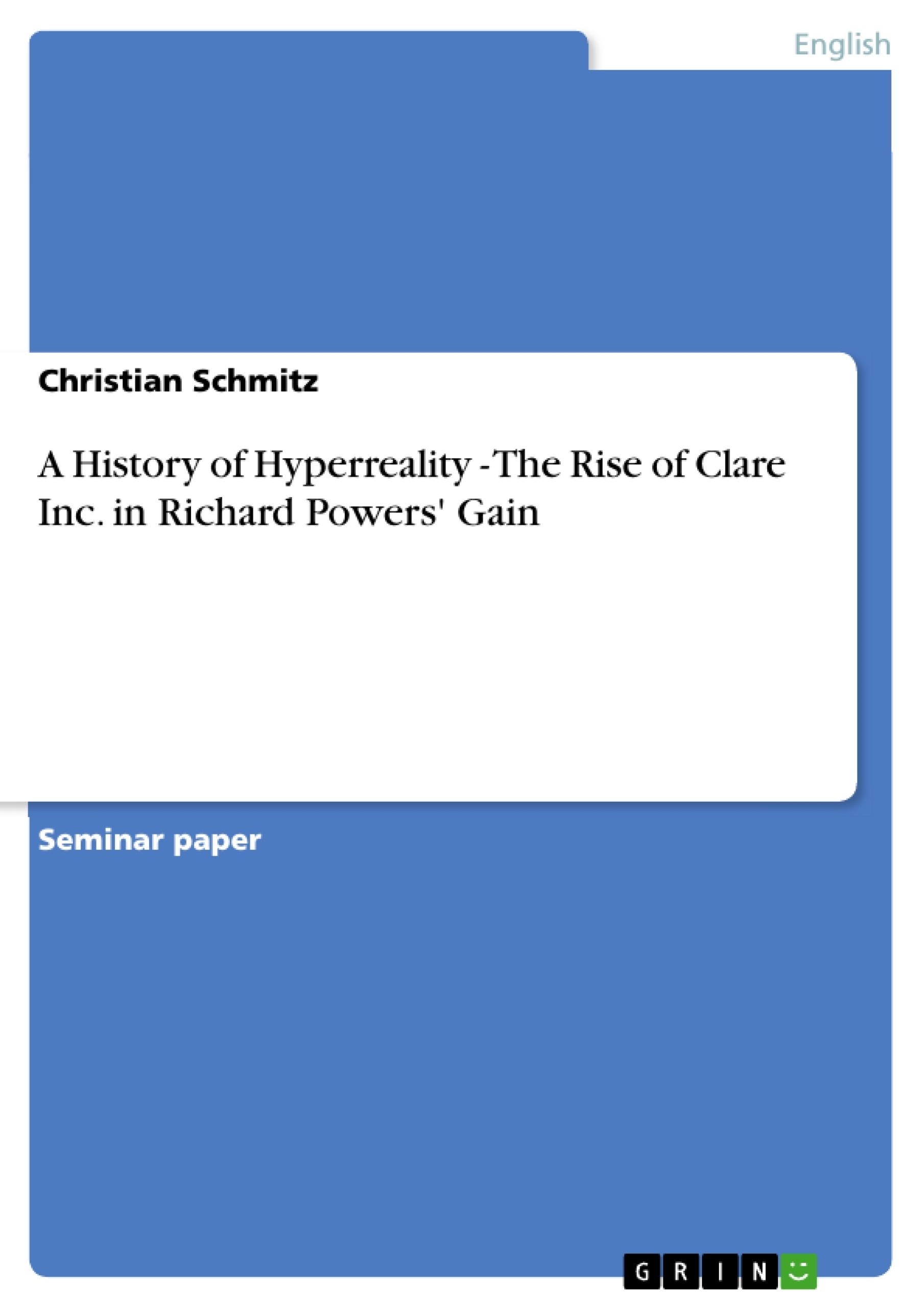The first part of this paper will deal with the concept of hyperreality. As it would go beyond the scope of this paper to take into consideration everything that has been said and written about hyperreality, I will focus on two of its most prominent theorists: Jean Baudrillard and Umberto Eco. Their comments and ideas are not only relatively easy to grasp and therefore easy to apply to the novel but are also sufficient enough to explain the concept in adequate depth.
The second part will then focus on the novel itself, to be more precise it will exclusively deal with the storyline of the Clare enterprise. Although the second storyline also provides a number of examples for hyperreality, I decided to leave it out as it only takes place in the present and therefore would disturb the linear concept of this paper. This part will apply the theories of hyperreality onto the novel step by step in chronological order of the events, starting with the beginnings of the enterprise and stating the problems of a referential beginning. It will then treat of the beginnings of hyperreality with regard to Clare and its accordant society and later with the process of incorporation and its problems; then I hope to show in how far simulation and merchandise are intertwined and almost naturally lead to the age of simulacra we live in today. Finally I want to point out that this paper is not a full scale interpretation of Gain but only deals with the concept and development of hyperreality within the novel.
Inhaltsverzeichnis (Table of Contents)
- Introduction
- Hyperreality
- Clare - A History of Hyperreality
- Starting Referential
- Fitting the Itch to the Scratch
- The Birth of Fake
- Incorporation
- The Age of Simulation and Merchandise
- The Age of Simulacra
- Conclusion
Zielsetzung und Themenschwerpunkte (Objectives and Key Themes)
This paper aims to explore the concept of hyperreality and its development within the context of Richard Powers’ novel Gain. The analysis focuses on the Clare enterprise as a case study, tracing the evolution of hyperreality through the company's history and its interaction with American society.
- The development of hyperreality in American business and society
- The relationship between signifiers and referents in a hyperreal context
- The role of simulation and merchandise in creating and sustaining hyperreality
- The impact of hyperreality on the perception of reality
- The historical and cultural context of hyperreality
Zusammenfassung der Kapitel (Chapter Summaries)
The first chapter introduces the concept of hyperreality, drawing on the theories of Jean Baudrillard and Umberto Eco. It explores the relationship between language, reality, and the signifier, arguing that hyperreality arises from the breakdown of referential relationships. The second chapter focuses on the Clare enterprise in Powers' Gain, using the theories of hyperreality to analyze its development from a referential beginning to a fully simulated entity. The chapter examines the company's incorporation into the American social fabric and the resulting blurring of boundaries between reality and simulation.
Schlüsselwörter (Keywords)
The paper focuses on the concept of hyperreality, specifically in the context of Richard Powers' novel Gain. Key keywords include hyperreality, simulation, simulacra, referent, signifier, representation, American business, and consumerism. The analysis also explores the relationship between reality and the imaginary, the impact of technology on hyperreality, and the role of media and marketing in shaping consumer perceptions.
- Citar trabajo
- Christian Schmitz (Autor), 2006, A History of Hyperreality - The Rise of Clare Inc. in Richard Powers' Gain, Múnich, GRIN Verlag, https://www.grin.com/document/63167



